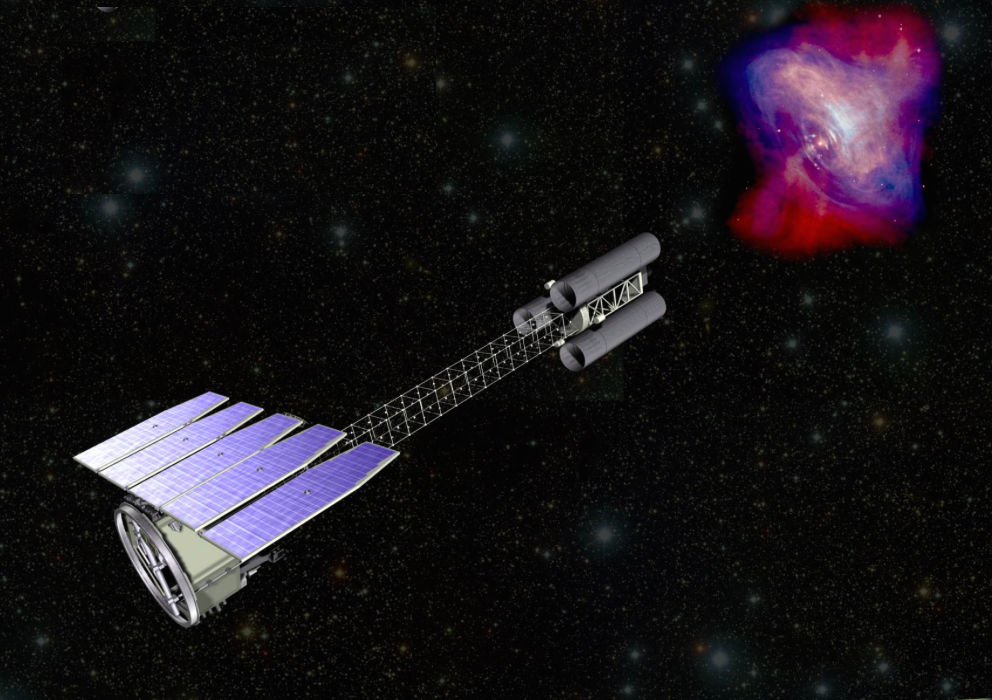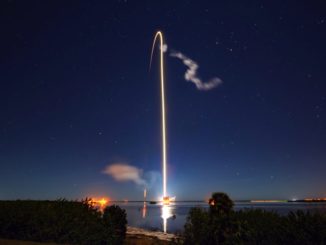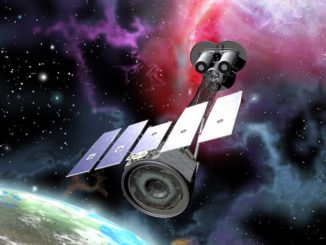
NASA has selected three finalists for a new Explorer-class astrophysics satellite mission scheduled to launch by the end of 2020, and two of the proposals aim to fulfill similar goals to an X-ray telescope shelved after cost overruns in 2012.
The U.S. space agency Friday announced three candidates for the next “Small Explorer” mission, a series of relatively low-cost projects selected from proposals submitted by scientists.
The finalists picked by NASA are:
- SPHEREx: An All-Sky Near-Infrared Spectral Survey proposed by James Bock from the California Institute of Technology
- IXPE: The Imaging X-ray Polarimetry Explorer led by Martin Weisskopf, an astronomer at NASA’s Marshall Space Flight Center
- PRAXyS: The Polarimeter for Relativistic Astrophysical X-ray Sources submitted by Keith Jahoda from NASA’s Goddard Space Flight Center
Each science team will receive $1 million from NASA to conduct an 11-month mission concept study, according to the space agency. NASA plans to choose one of the concepts in early 2017 for full development and launch, which is to occur before the end of 2020.
The winning mission will have a budget cost cap of $125 million for the spacecraft and science instruments, plus up to $50 million to fund a launcher.
Two of the proposals, IXPE and PRAXyS, will peer into energetic stellar factories and graveyards across the observable universe to study how the mysterious regions behave and emit X-ray signals.
Both would measure the polarization of X-ray waves to glean new insights about structures and magnetic fields around black holes, rapidly-spinning super-dense neutron stars, the cloudy remnants of exploded stars, and the powerful cores of faraway galaxies, all prolific emitters of X-ray light.
IXPE would launch into low Earth orbit and extend a mast fitted with three X-ray telescopes at the end. The satellite’s X-ray detectors would come from Italian scientists.
“IXPE uses X-ray polarimetry, which is the measurement and interpretation of the polarization of electromagnetic waves, to improve our understanding of how X-ray emission is produced in objects such as neutron stars, pulsar wind nebulae, and stellar and supermassive black holes,” NASA said in a statement.
PRAXyS takes a slightly different approach to X-ray astronomy, but its goals intersect with IXPE.
According to Keith Jahoda, the principal investigator for the PRAXyS mission, the telescope has similar goals to the Gravity and Extreme Magnetism, or GEMS, project canceled by NASA in 2012.
The budget for the GEMS mission was projected to exceed NASA’s strict cost cap by 20 to 30 percent, and agency officials terminated the project after spending approximately $50 million.
Jahoda said PRAXyS will lean on lessons learned from GEMS, which passed a preliminary design review before its cancellation.
“The re-use is largely in design, in many cases verified with engineering units,” Jahoda told Spaceflight Now.
“PRAXyS uses X-ray polarimetry to characterize the geometry and behavior of X-ray sources including super-massive black holes, pulsars, magnetars and supernovae,” NASA said in a statement.
The SPHEREx mission concept would scan the sky with an infrared telescope for at least two years from a perch in low Earth orbit in a bid to study inflation, the theory that the universe grew in an instant from a speck to exponential size just after the Big Bang.
SPHEREx is led by Jamie Bock, one of the scientists behind last year’s now-questioned discovery of gravitational ripples in the distant universe. The gravity waves were purportedly evidence for the confirmation of the inflation theory, but subsequent data show the detection may have been a false reading.
The infrared observatory would study the distribution of galaxies throughout the universe to learn how the immense structures making up a cosmic web of matter may have been influenced by the ripples left behind by inflation after the Big Bang.
Closer to home, SPHEREx would measure the composition of ices around young stars still in the early stages of developing planets. Such ices are believed to contain the building blocks to life.
All the missions could launch on a lightweight Pegasus-class rocket, according to overviews published by their science teams, but a final launcher selection would come after NASA picks which project will proceed into development.
NASA also picked two science teams as finalists to receive up to $65 million to develop science instruments, but not a full-up space mission. The agency plans to name one winner in that category when it greenlights one of the more expensive Small Explorer missions in early 2017.
One of the “mission of opportunity” proposals is for a balloon-borne radio telescope to study high-frequency radio emissions from our Milky Way galaxy and a nearby companion galaxy, the Large Magellanic Cloud, to study the life cycle of interstellar material. The other is a U.S. contribution to Japan’s LiteBIRD mission scheduled for launch in 2021 to create a more refined map of the cosmic microwave background, or the remnant glow from the Big Bang, to follow up on NASA’s WMAP and Europe’s Planck missions.
“The Explorers Program brings out some of the most creative ideas for missions to help unravel the mysteries of the Universe,” said John Grunsfeld, NASA’s associate administrator for science at NASA Headquarters, in Washington. “The program has resulted in great missions that have returned transformational science, and these selections promise to continue that tradition.”
Small Explorer missions in NASA’s current portfolio include the NuSTAR X-ray telescope and the IRIS satellite observing the sun.
Medium-class Explorer projects, which have slightly higher budget guidelines, include the ICON mission probing the Earth’s ionosphere and TESS, NASA’s next exoplanet-hunting telescope. ICON and TESS are in development for launches in June and August 2017, respectively. A competition for the next medium-class Explorer project is expected in 2017.
Email the author.
Follow Stephen Clark on Twitter: @StephenClark1.



